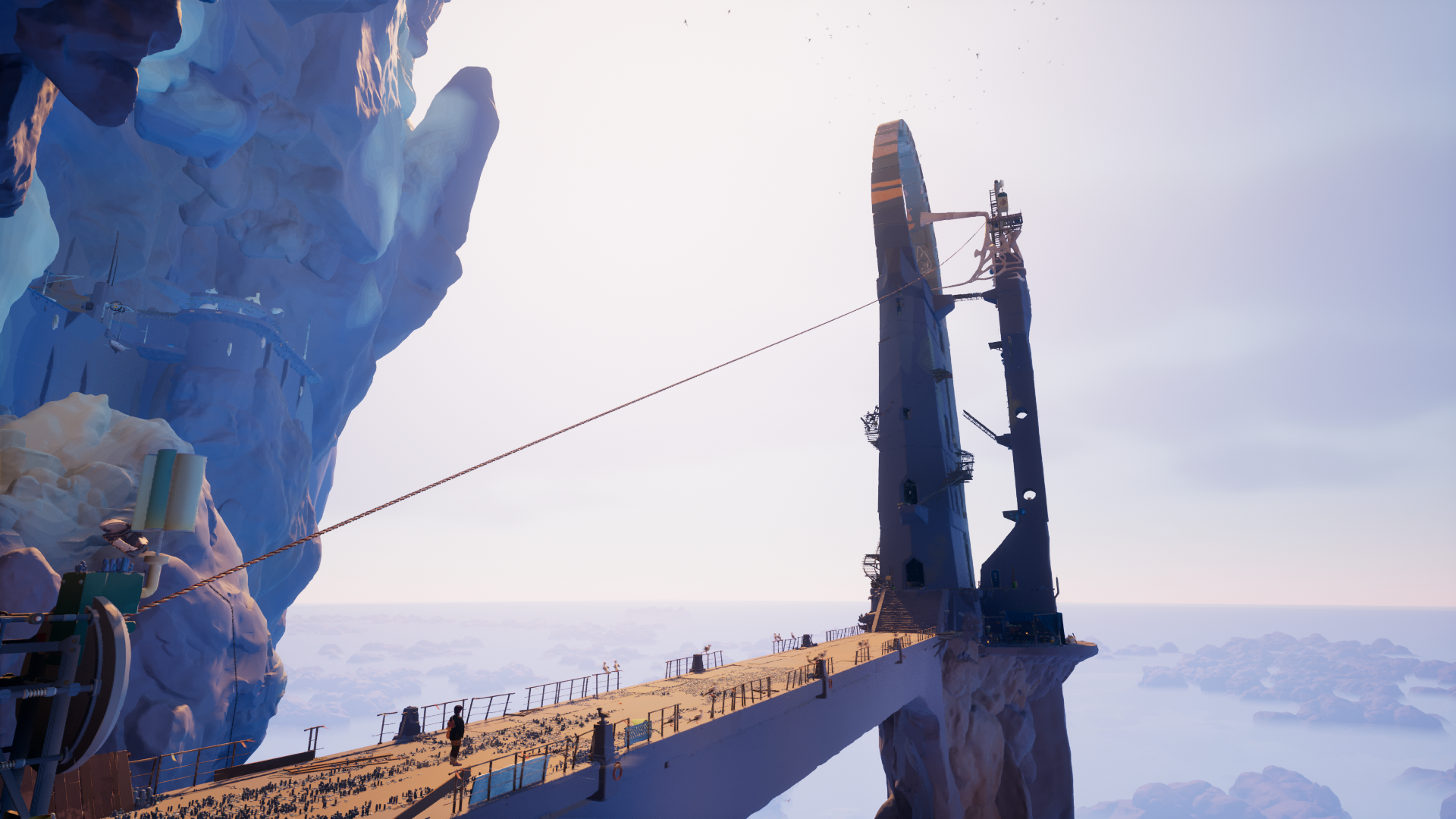In Jusant, there’s a species of palm-sized creatures called pebbles that don what appears to be hard, gray carapaces, and you’ll first find – or hear — them scuttering along its plunging cliff faces. As a seasoned mountaineer, you’ll learn to rely on pebbles for scrambling up steep crags, grabbing onto them as makeshift handholds as these creatures hurriedly make their way between small fissures. At times they cease to move, as if grappling with the weight of hauling you up huge slabs of rock, but seem otherwise unharmed when you let go. I can’t help but think that their sheer prevalence, alongside the remains of a recently abandoned village, hints at what used to be a symbiotic harmony between nature and humans. As civilization expanded, pebbles, too, may have evolved to conform to human behavior. In fact, they barely shy away when you reach out to grab onto their shells.
This sense of harmony extends to the rest of the game, which is all about the wonder of scaling boulders, cliffs, and mountains. It’s devoid of any dialogue, and you’re not forced to engage in any obligatory video game-esque activities like collecting resources, crafting tools, hunting beasts, or displacing people from their homes. You just explore the last vestiges of a civilization, marooned on a dusty, barren landscape. Climbing here is a gentle, meditative act, a means of movement as well as a form of reverence towards nature. You’re not plundering any of its resources to scale the heights; rather, you’re healing the environment in small ways, such as restoring life to drying flora. You’ll also traverse toward hard-to-reach altars and frescos, occasionally gasping in awe at their wonders.
Its world, too, is a gorgeous combination of a habitat that’s thriving with life and a civilization that’s long gone. Beyond the pebbles, flocking birds gather on top of boulders, and critters called chocos spring into life when you walk near them, chattering as they retreat to their burrows. The higher you go, the more of that long-lost civilization you’ll be privy to. Letters and diaries are strewn alongside discarded furnishings, climbing paraphernalia, and religious artifacts — all the trappings of a settlement accustomed to living at high altitudes. At times, ascending the mountains of Jusant feels like a pilgrimage of sorts; you climb, you pause, and you meditate on what seems like echoes of the civilization’s last days through conches that you can pick up along the way.

Jusant is so enchanting because it also captures the cadences of real-life rock climbing excellently. I’m an amateur climber, and I’ve found climbing to be more than just a display of brute strength. Rather, it can be a contemplative experience. In Jusant, you’ll chart out routes, identify useful handholds (that is, surfaces of the cliff you can grab), and manage your stamina mid-climb by shaking off the pump in your arms In Jusant. You climb by maneuvering to holds with both hands, while placing pitons mid-climb to prevent falling from great heights and losing your progress on the route. Jusant isn’t punishing, since you’ll never suffer fall damage from inadvertently slamming your feet on the ground from a considerable height. The challenge comes from having to spend some time examining your surroundings and pondering potential moves. Is this rock wall climbable? Are there any good holds to grab onto? Can the building on the other end of this settlement be traversed by taking a leap and a swing in that direction?
This content is for registered subscribers only
Register now to access "A Beautiful View: Jusant and the Joys of Climbing".
Sign up now Already have an account? Sign in